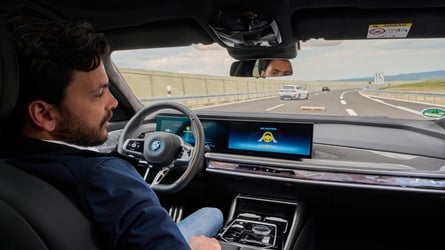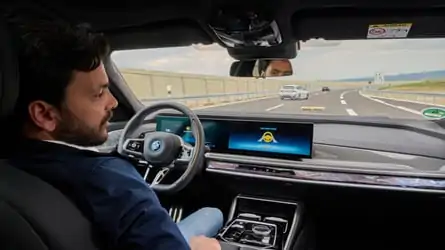Even if you don’t use the automated driving features, you’re looking at a fine of up to $1,500 and six months in prison.


Apr 16, 2024 at 1:00pm ET
The Canadian province of British Columbia passed legislation at the beginning of April banning the use of all cars that have Level 3, Level 4 or Level 5 advanced driving assistance systems, as defined by SAE International. The change was first spotted by our sister site, Motor1.com.
B.C.’s updated Motor Vehicle Act now makes it an offense to drive or permit the driving of a vehicle that’s equipped with at least Level 3-capable driving assistance hardware, with drivers facing a penalty ranging from $368 (Canadian) to $2,000 (Canadian) and a maximum of six months in prison.
B.C. goes the other way in the self-driving game
While U.S. states like Arizona and California welcomed self-driving startups like Waymo and Cruise, the Canadian province of British Columbia did the opposite by banning the use of Level 3-equipped (or higher) vehicles.
In other words, whether the person behind the wheel is using the hands-free assistants or not, they’re still liable if caught by the police.
That said, there are currently only a handful of Level 3-capable vehicles sold globally, and just two of them are available in North America. BMW has the 7 Series and i7 which, when fitted with the $6,400 Personal Pilot L3 pack, transforms them into Level 3-capable vehicles, but only in Germany for now.
In the United States, the only manufacturer that sells L3 cars is Mercedes-Benz. The combustion-powered S-Class and the all-electric EQS are the only Level 3 production vehicles in the U.S., but the optional Drive Pilot hardware that makes it all happen is only certified in California and Nevada. Tesla‘s so-called Full Self-Driving feature is still considered a Level 2 system.
This means that the possibility of driving an L3-equipped vehicle in B.C. is very, very small.
Gallery: 2024 Mercedes-Benz EQS With Drive Pilot
15 Photos
British Columbia recognizes that highly automated vehicles will be a part of its residents’ lives but said that “further testing and policy development are necessary before Level 3 or higher automated vehicles are considered safe and can begin to be allowed for public use on B.C. roads.” With the new regulations in place, the only legal way to drive a Level 3-capable or higher vehicle in the Canadian province is through an approved pilot project.
According to SAE International, a car that has Level 3 automated driving technology can drive itself under limited conditions and the driver must take over when the feature requests it. With Level 4 and Level 5, the driver will no longer have to take over and the car will do everything automatically.
The new automated driving vehicle ban in British Columbia is part of a larger update package to the Motor Vehicle Act which includes new rules for e-bikes, electric kick scooters and for protecting vulnerable road users.











